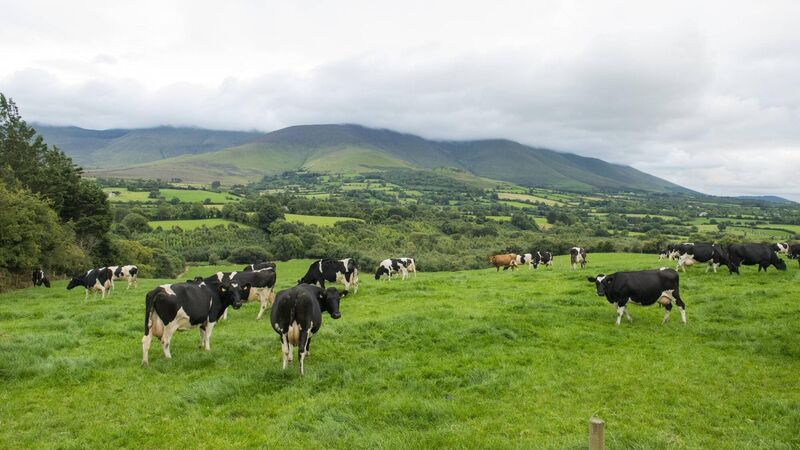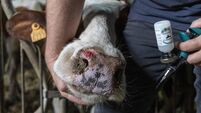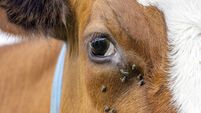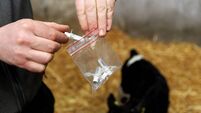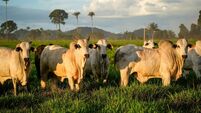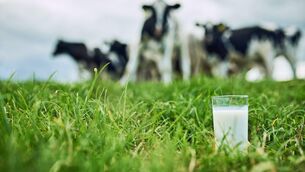The Environmental Protection Agency’s (EPA) red map, may not, after all, be used to determine areas moving to a maximum stocking rate of 220kg N per hectare from 2024, according to Agriculture Minister Charlie McConalogue.
Speaking in the Dáil, he said the red map did not include areas that, based on previous water quality monitoring publications by the EPA, would have been expected to fail the European Commission’s nitrates derogation standards.
“If the more comprehensive Water Framework Directive (WFD) dataset was used for the commission’s two-year review, more land would likely be bought into the area where derogation farmers will have to reduce their stocking rates,” Mr McConalogue said, responding to questions from Fianna Fáil TD Aindrias Moynihan.
The minister said the EPA acted in accordance with the relevant commission framework.
But he added: “The environmental assessment for the interim review of the Nitrates Action Programme may determine that the best available and most comprehensive dataset is required to be used for the two-year water quality review.
“Therefore, the map the EPA has published should not be considered to be the final map of land moving to the maximum stocking rate of 220kg N per hectare from 2024.”
Flexibility
Meanwhile, his department continues to engage with the European Commission to seek flexibility regarding their conditionality around the two-year water quality review.
“This engagement has taken place and will continue; however, there is no guarantee that the commission will agree to reopening its decision.”
The minister explained in his Dáil reply that Ireland secured a nitrates derogation for 2022 to 2025, but it included the condition that Ireland must use specific criteria to conduct a two-year water quality review.
“Where that review shows there are polluted waters, or waters at risk of pollution that are not showing signs of improvement, or where worsening trends have occurred over the period 2021 and 2022, the maximum stocking rate for derogation farms must be reduced from 250kg to 220kg of livestock manure nitrogen per hectare from 2024.
“The EPA undertook this review and provided the results as an Annex to their main report on nitrogen and phosphorous concentrations in Irish waters. In accordance with the commission’s Implementing Decision, the EPA review is based on the Nitrates Directive monitoring network (rather than the WFD monitoring network which the EPA also maintains).”
Significant efforts
The minister has also said the Government fully recognises farmers have made significant efforts to address water quality in recent years.
“However, these changes will take time before their full impact on water quality becomes evident,” Mr McConalogue said.
The challenge is that the level of nutrients in many of our waters remains too high, as evidenced by reports from the EPA.
“This is increasingly relevant to discussions with the European Commission, as Ireland is very unlikely to meet its 2027 Water Framework Directive target of having all waterbodies in at least good ecological status, with only some minor exceptions being permitted.”
He said the commission must be assured that derogation will not compromise the achievement of directive’s objectives and added that he “remains committed to working with farmers to improve water quality so Ireland can retain the maximum stocking rate possible”.
The EPA has confirmed that the commission required mapping based on the nitrates directive monitoring network (a smaller network of 200 to 300 monitoring points), rather than the EPA’s full national water quality monitoring.
“This means some areas with high numbers of derogation farms, and which may need to reduce nitrogen losses in waters, are not included on the red map, because they do not have a monitoring station in the nitrates directive monitoring network,” the director of the EPA’s office of evidence and assessment Eimear Cotter said.
“We were asked to look at the difference between 2021 and 2022.”
Scientific evidence
Meanwhile, the Irish Farmers’ Association (IFA) has said there is not enough scientific evidence to justify reducing Ireland’s nitrates derogation limit.
IFA president Tim Cullinan said the “red map” cannot form the basis for a review, which would cost the rural economy €236m if the stocking rate is reduced, while having “negligible impact” on water quality.
According to the IFA, an assessment period of two years is too short to assess water quality trends.
It also says a reduced stocking rate threshold of 220kg N/ha would have a negligible impact on water quality.
IFA director of policy, Tadhg Buckley, said last week that the IFA proposes to satisfy the commission with alternatives to cutting stocking rates.
